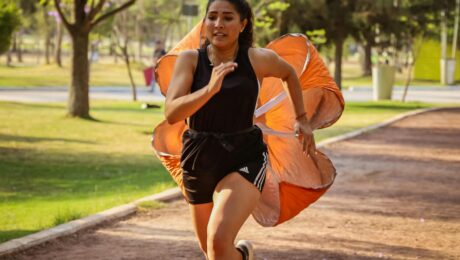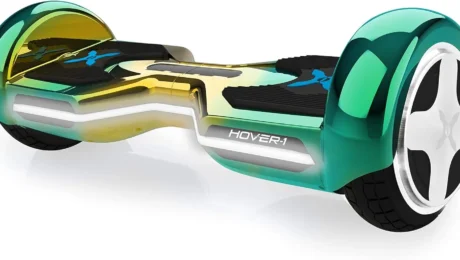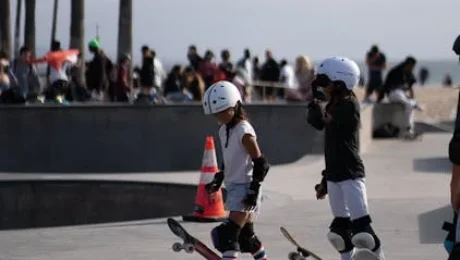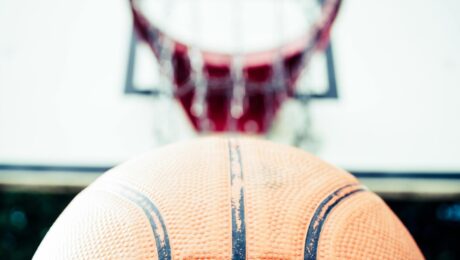Embracing the Wild: The Ultimate Guide to Camping
- Published in Uncategorized
The Ultimate Guide to Choosing the Right Pool Float for Your Needs
- Published in Uncategorized
Run in Style: Fashionable Running Gear and Apparel
Running is not just a form of exercise, it’s a lifestyle. And what better way to embrace this lifestyle than by looking stylish and fashionable while hitting the pavement? Gone are the days of boring, plain running gear. Today, there are countless options for fashionable running apparel that not only look great but also provide comfort and performance. In this blog post, we will explore some of the trendiest running gear and apparel to help you run in style.
- Colorful Leggings: Say goodbye to basic black leggings and hello to vibrant, eye-catching designs. Brands like Lululemon, Nike, and Athleta offer leggings in a variety of colors and patterns that will make you stand out on your runs. Whether you prefer bold prints or subtle pastels, there is a pair of leggings out there for every fashion taste.
- Stylish Sneakers: The right pair of sneakers can make or break your running outfit. Fortunately, many athletic brands are now offering stylish sneakers that not only provide support and comfort but also look great. From bright neon hues to sleek metallic finishes, there is a sneaker style for everyone.
- Crop Tops and Tank Tops: Show off those toned abs with crop tops and tank tops designed specifically for running. Brands like Outdoor Voices and Adidas have created stylish tops that wick away sweat and keep you cool during your workouts. Pair them with high-waisted leggings for a trendy look that will turn heads.
- Reflective Gear: Safety doesn’t have to compromise style when it comes to running at night or in low-light conditions. Many brands now offer reflective gear such as jackets, vests, and accessories that not only keep you visible but also add a cool factor to your outfit.
- Accessories: Complete your fashionable running look with accessories like headbands, sunglasses, and smartwatch bands in coordinating colors or patterns. These small details can elevate your overall aesthetic while also serving a functional purpose during your runs.
Running in style is not just about looking good – it’s about feeling confident and motivated during your workouts. By investing in fashionable running gear and apparel, you can express your personal style while still prioritizing performance and comfort. So next time you hit the pavement, don’t be afraid to show off your fashion sense with colorful leggings, stylish sneakers, trendy tops, reflective gear, and chic accessories. After all, why sacrifice style when you can run in style?
- Published in Uncategorized
Glide into the Future with the Hover-1 Eclipse Electric Hoverboard!
- Published in Uncategorized
Protective Gear 101: How to Stay Safe in Your Sport
- Published in Uncategorized
Skateboarding Fashion: What to Wear on Your Board
- Published in Uncategorized
Fishing for Beginners: Essential Gear and Tips to Get Started
Fishing is a relaxing and rewarding outdoor activity that offers a great way to connect with nature. Whether you’re seeking solitude or a fun family outing, fishing can be an enjoyable pastime for everyone. If you’re new to fishing, getting started might seem a bit overwhelming with all the gear and techniques out there. Fear not! This guide will walk you through the essential gear you need, important safety tips, and beginner-friendly fishing techniques.
Essential Gear for Beginners
1. Fishing Rod and Reel
A fishing rod and reel are fundamental to your fishing experience. For beginners, a spinning rod and reel combo is recommended due to its ease of use and versatility. Look for a medium-light rod around 6 to 7 feet long paired with a spinning reel that suits your hand size.
2. Fishing Line
The type of fishing line you choose depends on the fish you’re targeting and the water conditions. Monofilament line is a good all-around choice for beginners because it’s affordable, easy to handle, and knots well. A 6-12 pound test line is ideal for most freshwater fishing scenarios.
3. Hooks
Hooks come in various sizes and shapes. For beginners, a selection of size 6 to 10 hooks will cover most needs. Opt for a pack of bait holder hooks or circle hooks, which are easy to use and good for catch-and-release fishing.
4. Bobbers (Floaters)
Bobbers help you know when a fish is biting. They keep your bait at the desired depth and make fishing more enjoyable for beginners. Start with simple round bobbers that clip onto your line.
5. Sinkers (Weights)
Sinkers are necessary to keep your bait underwater. Split shot sinkers are easy to use and can be added or removed without cutting your line. They come in various weights, so having a small assortment is helpful.
6. Bait and Lures
Live bait such as worms or minnows is effective for beginners. If you prefer artificial bait, start with soft plastic worms, spinnerbaits, or crankbaits, which are versatile and easy to use.
7. Tackle Box
A small tackle box will help you organize your gear. Choose one with multiple compartments to keep your hooks, bobbers, sinkers, and lures neatly arranged.
8. Fishing License
Check your local regulations and obtain a fishing license if required. This is crucial for legal and conservation reasons.
Important Safety Tips
- Know the Weather: Always check the weather forecast before heading out. Avoid fishing in extreme weather conditions such as thunderstorms, heavy rain, or high winds.
- Wear a Life Jacket: If you’re fishing from a boat, kayak, or even a pier, wearing a life jacket is a must. Safety should always come first.
- Stay Hydrated and Protected: Bring plenty of water and wear sunscreen, a hat, and sunglasses to protect yourself from sunburn and dehydration.
- Be Aware of Your Surroundings: Watch out for slippery rocks, uneven ground, and sharp objects. Always let someone know your fishing location and expected return time.
- Handle Fish Safely: Use wet hands or a wet cloth to handle fish, especially if you plan to release them. This minimizes harm to their protective slime coating.
Beginner-Friendly Fishing Techniques
1. Bottom Fishing
Bottom fishing involves casting your bait to the bottom of the water where fish often feed. This technique is effective in lakes, ponds, and rivers. Use a sinker to keep your bait near the bottom and wait for a fish to bite.
2. Float Fishing
Float fishing uses a bobber to suspend your bait at a specific depth. Cast your line and watch the bobber. When it dips underwater, it’s a sign that a fish is biting. This method is great for targeting fish that swim at mid-depths.
3. Casting and Retrieving
This technique involves casting a lure out and reeling it back in to mimic the movement of prey. Spinnerbaits and crankbaits work well for this method. Vary your retrieval speed and pattern to attract different fish.
4. Fly Fishing
Though more advanced, fly fishing can be a rewarding technique for beginners who enjoy a challenge. It involves using lightweight flies that mimic insects and requires a special fly rod, reel, and line. Start with a basic setup and practice your casting in an open area before heading to the water.
Final Thoughts
Fishing is a wonderful way to enjoy the outdoors, relax, and potentially catch dinner. With the right gear, safety precautions, and techniques, you’ll be well on your way to becoming a skilled angler. Remember to be patient, respectful of nature, and most importantly, have fun! Happy fishing!
- Published in Uncategorized
Gear Up for Adventure: Essential Outdoor Sports Equipment
As outdoor enthusiasts, we all know the excitement that comes with gearing up for a new adventure. Whether you’re hitting the trails for a hiking expedition, shredding down the slopes on a snowboarding trip, or paddling through rapids on a whitewater rafting excursion, having the right equipment is essential. In this blog post, we will explore some of the must-have gear for various outdoor sports to ensure you are prepared and ready for your next adrenaline-pumping adventure.
- For hikers and backpackers, a sturdy backpack is crucial. Look for one with padded straps, multiple compartments for organization, and adjustable straps for comfort. A good pair of hiking boots is also essential to provide support and traction on rugged terrain. Don’t forget to pack essentials like a water bottle, first aid kit, map, compass, and lightweight snacks to fuel your journey.
- If you’re into rock climbing or bouldering, investing in quality climbing shoes is a game-changer. These specialized shoes provide grip and support on rocky surfaces, allowing you to confidently conquer challenging routes. Additionally, harnesses, carabiners, ropes, and helmets are essential safety gear to protect you during climbs. Consider taking a climbing course to learn proper techniques and safety protocols before hitting the rocks.
- Water sports enthusiasts should prioritize safety when gearing up for adventures like kayaking or paddleboarding. A well-fitted life jacket is non-negotiable to keep you buoyant in case of an accident. Waterproof bags are also handy for storing essentials like sunscreen, snacks, and extra layers of clothing while out on the water. Invest in a high-quality paddle that suits your skill level and preferences to enhance your performance on the waves.
- Winter sports require specialized equipment to stay warm and safe in cold conditions. Skiers and snowboarders need insulated jackets and pants, moisture-wicking base layers, gloves or mittens, goggles or sunglasses with UV protection, helmets, and appropriate footwear like ski boots or snowboard boots. Don’t forget avalanche safety gear if venturing into backcountry terrain – beacons, probes, shovels could save lives in emergencies.
- For cyclists hitting the trails or roads on mountain bikes or road bikes respectively – helmets are non-negotiable! Protect your head from potential injuries by investing in a helmet that fits properly and meets safety standards. Cycling shorts with padding can enhance comfort during long rides while bike lights keep you visible in low-light conditions. Carry repair kits with spare tubes/tools in case of mechanical issues while out riding.
Gearing up for outdoor sports is an exciting process that requires careful consideration of essential equipment tailored to each activity’s specific needs. By investing in high-quality gear that prioritizes safety and performance, you can enjoy your adventures with peace of mind knowing that you are well-prepared for any challenges that may arise along the way. So next time you embark on an outdoor escapade whether it’s hiking through rugged terrain, climbing towering cliffs, paddling down rushing rivers, shredding fresh powder, or cycling through scenic landscapes – make sure you have the necessary equipment to make your experience unforgettable!
- Published in Uncategorized
Discover the Joy of a Fishing Trip: Your Guide to a Perfect Day by the Water
Fishing is one of the most relaxing and rewarding outdoor activities you can experience. Whether you’re an experienced angler or a complete beginner, a fishing trip offers the perfect blend of adventure, tranquility, and connection with nature. If you live near a lake or river, you’re in luck! Here’s a comprehensive guide to organizing an unforgettable fishing expedition, complete with equipment recommendations and basic tutorials for beginWhy Go Fishing?
Fishing isn’t just about catching fish; it’s about the experience. Here are a few reasons why you should consider a fishing trip Stress Relief**: The peaceful environment of a lake or river provides a perfect escape from the hustle and bustle of everyday life.
– Bonding Time**: Fishing is a great way to bond with family and friends, sharing stories and creating memories.
– Skill Development**: Learning to fish can be a rewarding challenge, teaching patience, precision, and an appreciation for nature.
– Health Benefits**: Spending time outdoors can improve your physical health and mental well-being Planning Your Fishing Trip
1. Choose Your Location**
Selecting the right spot is crucial. Look for local lakes or rivers known for good fishing. Public parks and recreation areas often have well-maintained fishing spots with amenities like picnic tables and restrooms.
2. Gather Your Gear**
For beginners, the amount of fishing equipment available can be overwhelming. Here’s a basic list to get you started:
– Fishing Rod and Reel**: Opt for a simple spinning rod and reel combo. They’re versatile and easy to use for beginners.
– Fishing Line**: Monofilament line is a good choice for beginners due to its ease of use and versatility.
– Hooks**: Start with a variety pack of hooks in different sizes.
– Bait and Lures**: Live bait like worms or minnows is effective for many types of fish. Artificial lures can also be used, depending on the fish species.
– Tackle Box**: A small tackle box to keep your gear organized.
– Bobbers and Sinkers**: These help you control the depth of your bait.
– Pliers**: Handy for removing hooks from fish.
– Fishing License**: Ensure you have the necessary fishing license, which is often required by law.
3. Learn Basic Fishing Techniques**
For beginners, here are some fundamental techniques to get you started:
– Casting**: Hold the rod with both hands, pull the rod back over your shoulder, and then swing it forward smoothly, releasing the line at the right moment to send your bait into the water.
– Setting the Hook**: When you feel a bite, give the rod a firm tug to set the hook in the fish’s mouth.
– Reeling In**: Once the fish is hooked, reel it in steadily, keeping tension on the line to prevent the fish from escaping.
4. Safety First**
Always prioritize safety on your fishing trip. Wear life jackets when fishing from a boat, stay hydrated, and protect yourself from the sun with hats, sunscreen, and sunglasses.
Fishing Tutorials for Beginners
1. Setting Up Your Rod**
1. Attach the reel to the rod.
2. Thread the line through the rod guides.
3. Tie the hook to the end of the line using a simple knot, like the improved clinch knot.
2. Baiting the Hook**
1. For live bait, such as worms, thread the worm onto the hook, covering the sharp end to keep it secure.
2. For artificial lures, attach the lure to the hook using a loop knot to allow natural movement.
3. Casting Your Line**
1. Hold the rod at a comfortable angle.
2. Release the line by pressing the button on the reel (if using a push-button reel) or flipping the bail (if using a spinning reel).
3. Cast the line by swinging the rod forward and releasing the line smoothly.
Enjoying the Experience
Fishing is as much about the journey as it is about the catch. Take the time to appreciate your surroundings, enjoy the company of your fellow anglers, and relish the peacefulness of the water. Whether you catch a fish or not, the experience itself is the true reward.
A fishing trip is a fantastic way to immerse yourself in nature, learn new skills, and create lasting memories with loved ones. With the right equipment and a basic understanding of fishing techniques, even beginners can enjoy a successful and enjoyable day by the water. So grab your gear, head to the nearest lake or river, and discover the simple pleasures of fishing. Tight lines!
- Published in Uncategorized
A Beginner’s Guide to Essential Baseball Equipment
- Published in Uncategorized








